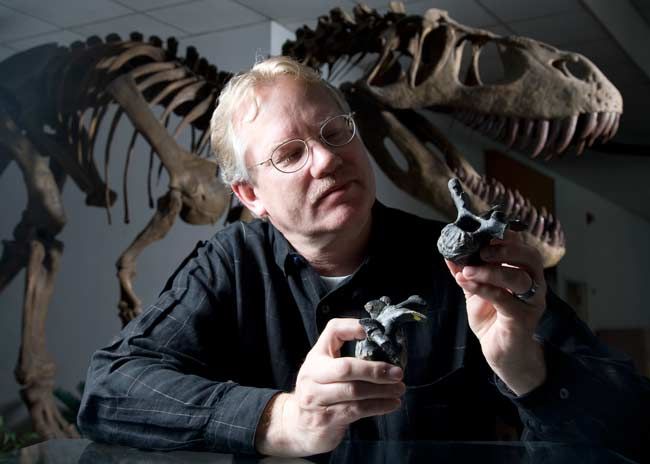Jurassic Undertakers Feasted on Dead Dinosaurs

Dermestid beetles are well known in forensic circles: They congregate on corpses to feed and breed, and their presence and life stage can help establish when the victim died. Some species haunt natural history museums, where they can be pests (munching the dead skin of stuffed animals) or helpers (enlisted by curators to clean bits of tendon and muscle off skeletons).
Now, new evidence shows that dermestids were recycling carcasses as far back as the Jurassic.
Working with two collaborators, Brooks B. Britt of Brigham Young University in Provo, Utah, examined the 150-million-year-old fossil of a Camptosaurus dinosaur and observed that most of its bones bear minute pits, grooves, bores, and scratches. Those, the team established, are the telltale signs of dermestid larvae that tried to get at the bone marrow after the putrid dinosaur meat ran out.
The marks matched those made by modern-day dermestids and not those of any other insect scavengers, such as termites (which can consume an entire human skeleton), mayfly nymphs, or moth larvae.
After examining 7,000 fossilized bones in addition to the Camptosaurus's, Britt says insect marks are common but often go unnoticed. Insect activity could explain some fossil mysteries, such as "dinosaur dentures" — teeth that are found side by side in perfect order but without any supporting jaw. Chances are, scavenging insects ate the whole bone away before it could fossilize.
The finding was detailed in the journal Ichnos.
- Image Gallery: Dinosaur Art
- Avian Ancestors: Dinosaurs That Learned to Fly
- A Brief History of Dinosaurs
Sign up for the Live Science daily newsletter now
Get the world’s most fascinating discoveries delivered straight to your inbox.













